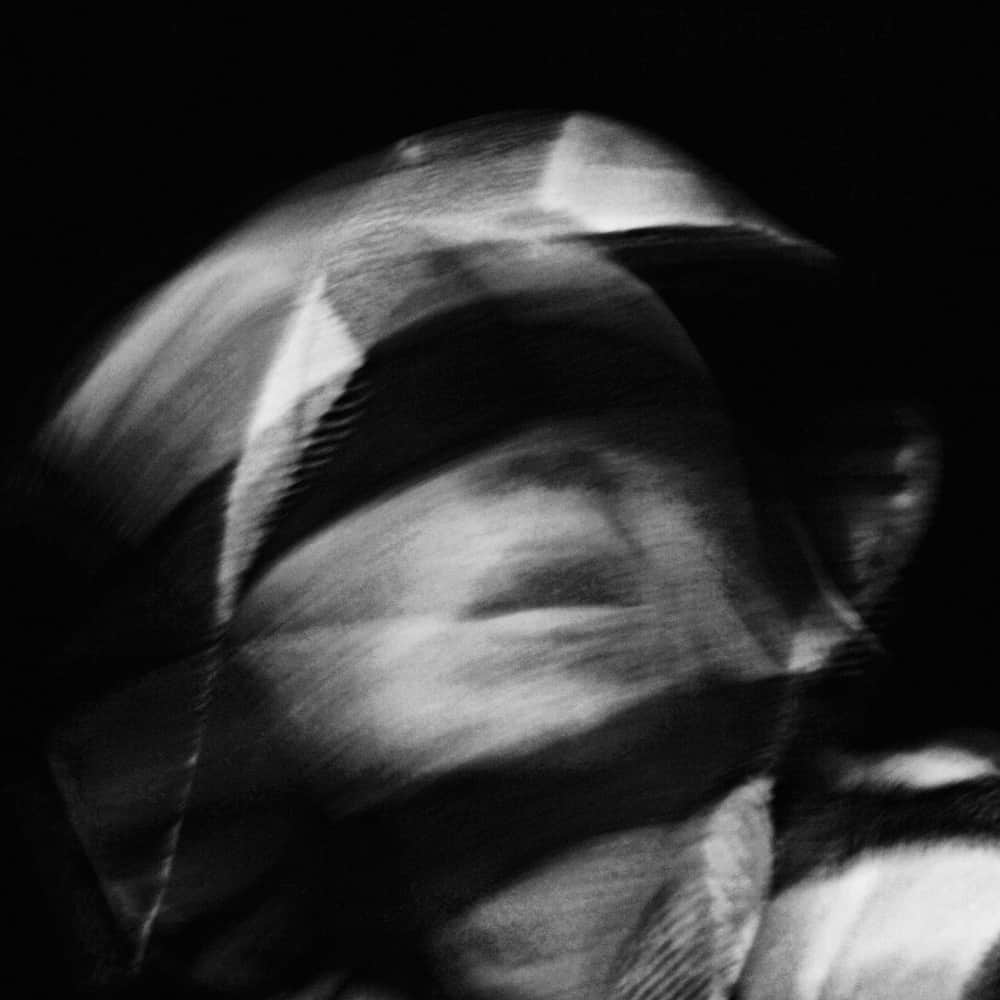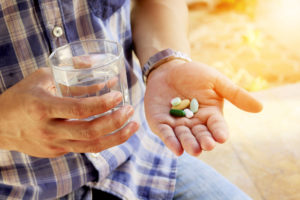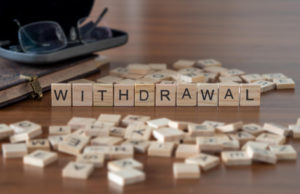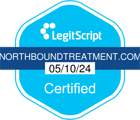Opiates contain opium, which is naturally derived from poppies. They fall under the umbrella of opioids, a class of narcotic analgesics (highly potent and habit-forming painkillers). Opioids include illegal narcotics and pharmaceutical medications used to treat severe and chronic pain. Many use the terms synonymously, as both opiates and opioids are extremely addictive, dangerous, and potentially lethal.
The CDC (Centers for Disease Control and Prevention) reports 450,000 opioid-related deaths in the United States over the last two decades, including cases with opiates and synthetic painkillers. There were nearly 47,000 fatalities involving opioids in 2018 alone, which is about six times the 1999 rate1.
Unfortunately, as the coronavirus crisis continues to devastate communities throughout the world, so does the American opioid epidemic. According to recent data from the AMA (American Medical Association), California and 39 other states have reported increases in opioid-related deaths since the onset of the pandemic. Many of these fatalities involved fentanyl, heroin, and other opiates2.
If you or someone close to you is battling opiate addiction or dependence, you may be wondering about the detox process. As the body rids itself of the toxins associated with substance abuse, an addict must go through withdrawal symptoms. So, what are the symptoms of opiate withdrawal? The addiction specialists at Northbound Treatment’s drug rehabilitation center are here to answer your questions about drug detox. Here’s what you should know about opioid and opiate withdrawal.
Opiate Withdrawal Symptoms: What to Expect
Opiates and synthetic opioids are powerful and highly addictive substances. In the medical and rehab communities, they’re considered the most dangerous drug class in the world today. Aside from being potentially deadly, narcotic abuse can wreak havoc on virtually all parts of the human body.
With long-term opiate abuse (and in some instances of short-term use), a chemical dependence can develop. This means a higher dose is required to reach the desired effect from taking the drug, leading many to feel like they need to use opiates to feel “normal.” Drug dependence is a slippery slope that often leads to full-scale addiction. For more opioid addiction facts, and to learn the difference between opioid vs opiate, be sure to check out more information on our blog.
When an individual is dependent, they’ll begin to experience opiate withdrawal symptoms when they go more than a few hours without their regular dose. The symptoms usually come in stages, starting with anticipatory, followed by early acute, and then peaking at a fully developed acute phase. Here’s a rundown of the opiate withdrawal timeline and what withdrawal symptoms to expect at each stage.
Anticipatory Opiate Withdrawal Symptoms
The earliest symptoms of opiate withdrawal are primarily psychological. When an addict knows they can’t (or won’t) get another dose, they’ll enter into an anticipatory stage about four to five hours after using opiates — especially if they’ve experienced withdrawal before and know what’s coming. At this point, symptoms typically include drug cravings, anxiousness, agitation, and irritability.
After a few hours, physical symptoms may set in as the urge to take or acquire more drugs becomes stronger. The first physical withdrawal symptoms of opiate addiction tend to be flu-like, including chills, fever, body aches, sweating, and upset stomach.
Early Acute Opiate Withdrawal Symptoms
A few hours later (or eight to ten hours after their last dose of opiates), an addict’s cravings will continue to intensify. Since taking more drugs would provide immediate relief from their discomfort, the urge to use can be extreme. Other psychological symptoms during the early acute withdrawal phase include anxiousness, restlessness, and heightened irritability.
If physical withdrawal symptoms haven’t begun, they will set in now. If they’ve already started, they will become more intense. At this point, an individual with opiate addiction will likely experience nausea, vomiting, diarrhea, fever, sweating, body aches, hot flashes, and appetite loss. Early acute opiate withdrawal symptoms will go on for 12 to 48 hours.
Fully Developed Acute Opiate Withdrawal Symptoms
One to three days following their last dose of opiates, an addict’s withdrawal symptoms will reach a peak. The psychological and flu-like effects will continue to intensify while other symptoms begin to surface.
During the fully developed acute withdrawal phase, an individual may experience elevated heart rate, muscle cramps, body tremors, headaches, insomnia, excessive sweating, shaking, extreme anxiousness, insomnia, confusion, disorientation, feelings of depression, and peak-level drug cravings.
In some severe cases, detoxing from opiates can cause hallucinations, delirium tremens (DTs), seizures, hypovolemic shock, or suicidal thoughts. Since another dose of opiates could temporarily alleviate the symptoms, addicts are tempted to use again, putting them at risk for overdosing. This is one of several reasons why it’s best to detox in a secure, clinically supervised setting, like the 180 Detox program at Northbound Treatment.
What Are the Symptoms of Opioid Withdrawal?
Many people wonder about the symptoms of opioid withdrawal and whether they differ from opiate withdrawal. Generally speaking, detoxing from synthetic opioids is similar to detoxing from drugs containing naturally derived opium.
The psychological symptoms of opioid withdrawal can include:
- Strong drug cravings
- Anxiousness, agitation, and irritability
- Feelings of depression
- Hallucinations, disorientation, or confusion
- Insomnia
- Delirium tremens or seizures
- Suicidal thoughts
The physical symptoms of opioid withdrawal can include:
- Fever, chills, hot flashes, or excessive sweating
- Upset stomach, appetite loss, nausea, vomiting, or diarrhea
- Headaches
- Elevated heart rate
- Muscle cramps, shaking, or body tremors
While opioid and opiate addicts experience many of the same withdrawal symptoms, individual experiences will vary. The intensity, duration, and specific effects of withdrawing will depend partly on the particular drug a person used, how long they used it for, how much they used, and their health history. For example, detoxing from short-acting opiates like heroin can be a relatively short process, but it may also be more intense than long-acting narcotics.
Why Medically Supervised Detox Is Crucial for Opiates
Withdrawal can be an agonizing experience, both physically and mentally. As we mentioned, the temptation to use opiates to alleviate symptoms is stronger than ever during opiate detox. When the body detoxifies, it works to eliminate its chemical dependence on a drug, meaning tolerance will go down. For this reason, using again in the middle of the detox process can increase a person’s risk of overdosing.
Northbound strongly recommends detoxing in a medically supervised environment. It will reduce the risk of relapse and potential overdose, but that’s not all. Our accredited 180 Detox program at our Orange County rehab center is designed to keep patients safe and help them feel as comfortable as possible when they go through withdrawal.
Though many people want to attempt to detox at home, the safest option is at an inpatient facility. When opiate withdrawal symptoms peak, it’s not uncommon to forget (or be too uncomfortable) to eat and drink water. As a result, severe dehydration can occur. Also, some addicts may be at risk of self-harm or hurting those around them. The clinical staff at Northbound is available 24 hours a day to support patients as they stabilize, ensure they’re fed and hydrated, monitor their vital signs, and provide medical and psychological care as needed.
The Full Continuum of Care for Opiate Addiction Treatment
Northbound Treatment has been guiding people in their journeys to recovery for over 30 years. We implement an evidence-based approach to opioid addiction treatment, which includes a full continuum of care. At our Orange County rehab facilities, most clients begin with our detox program, followed by inpatient (residential) rehab. Then they transfer to one of our outpatient treatment (OT) programs, and finally, our ongoing addiction support program.
Telehealth Treatment for Opiates
Our HomeBound telehealth outpatient program has been operating since January 2016. The therapists and facilitators at Northbound are seasoned in providing intensive online care for clients who may not be able to commute to our rehab centers. Our HomeBound program has also been helpful for those who want to practice physical distancing during the coronavirus pandemic.
Dual Diagnosis Treatment
Drug abuse can result in mental health disorders, such as anxiety, depression, or codependency. Research indicates that long-term use of opiates may increase an individual’s risk for MDD (major depressive disorder)3. In some cases, substance abuse is a coping mechanism for those with an underlying psychological condition. As part of our commitment to providing holistic care for all individuals, Northbound offers fully integrated dual diagnosis treatment to accommodate those with co-occurring drug addiction and mental illness.
If you or a loved one are ready to begin detox, please don’t hesitate to contact us. Call Northbound Treatment at (844) 919-0403 or fill out our admissions form to get started.
External sources:










